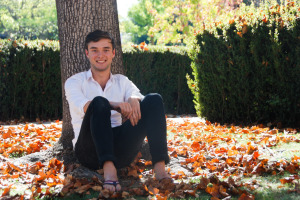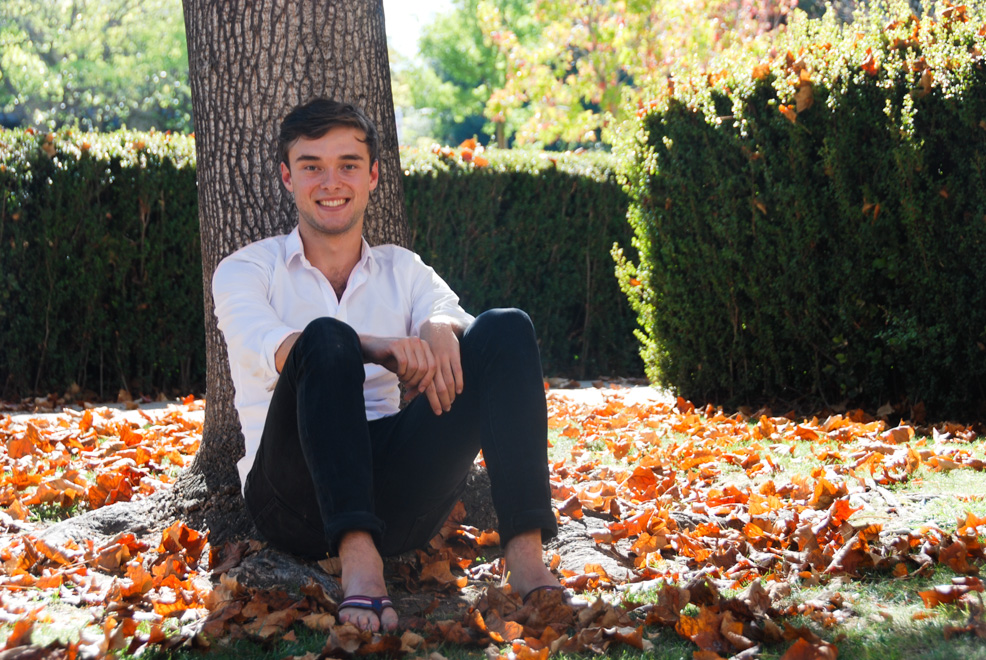Stanford’s admission rate for transfer students is even lower than that for the regular admission class, coming in at two percent. Only 33 transfer students were admitted for the fall of 2014.
As part of the weekly “Transfer Profile” series, The Daily interviewed Charlie Cockburn ’17, who spent two years at the University of Oxford and then had a gap year before transferring to Stanford.

(RAHIM ULLAH/The Stanford Daily)
The Stanford Daily (TSD): Can you give some background on yourself?
Charlie Cockburn (CC): I grew up in D.C. and attended boarding school in Andover, Mass. My father and mother are Anglo-Irish. My family owns Myrtle Grove in Ireland, where the first tobacco pipe was supposedly smoked. In my distant past, my ancestor Admiral Sir George Cockburn fought in the War of 1812, and directed the capture and burning of Washington.
TSD: Why did you choose Oxford?
CC: My grandfather and father went to Oxford. I visited Oxford in June and New College (a part of Oxford) attracted me.
TSD: What did you do at Oxford?
CC: I studied ancient and modern history. We had weekly tutorials. You learn to teach yourself — it was autodidactic.
TSD: How does Stanford compare to Oxford?
CC: At Oxford you pick your area of discipline coming in. I took history and philosophy. Oxford lacked breadth. At Stanford I want to branch out (potentially trying computer science and social dance). I’m taking Arabic.
I wanted to incorporate more things; philosophy is only the partial story. English, philosophy and history ought to be studied together. Stanford allows me to open up newer pastures.
TSD: Why Stanford?
CC: Stanford seemed like a mecca of engineers. A lot of my friends from boarding school came to Stanford. I’ve visited every winter break.
TSD: What are you planning to major in at Stanford — is it different from your Oxford major?
CC: I haven’t yet decided. At New College — my Oxford college — I studied ancient and modern history, where I delved into Archaic Greece, Gibbon and Tacitus, the French Revolution, the Soviet Union under Stalin, historiography, the birth of the modern world and more. I won’t abandon history. I’m simply going to make an attempt at breadth: I’m keen to try philosophy, literature — even natural science! — in the hopes of learning new ways of seeing and solving problems.
TSD: What are your plans after Stanford?
CC: When Paul McCartney was asked about the rumor that he’d died and been replaced by a double, he replied “I’d be the last to know.” I’d say the same about life after college. Of course I know what I don’t want: Friends who’ve sampled consulting and banking typically draw lurid comparisons to chattel slavery.
TSD: What specifically did you do during your gap year?
CC: At the start of my gap year I worked in the office of Senator Sheldon Whitehouse, where I got to attend generally disquieting hearings on government surveillance, imaginary nation-building in Afghanistan, unscrupulous shipping companies, droughts and leaking nuclear waste. Later I worked for a consulting firm in Myanmar. Yangon has become a boom town, where office space costs more to rent than in downtown Manhattan and where bars teem with bushy-tailed entrepreneurs, diplomats and desiccated Australian alcoholics. The seediness of the “last frontier” recalls Evelyn Waugh’s sparkling novel about journalists, “Scoop.”
TSD: While at Stanford, what groups or organizations are you interested in joining?
CC: In my first year at Oxford I fenced on the varsity team. I might take it up again here. Otherwise, I hope to try to write for one of the student publications.
TSD: What do you like best about Stanford so far?
CC: I would praise the weather, but for the recent pitiless sunshine. Only “mad dogs and Englishmen go out in the midday sun,” says Noel Coward. I pant along the paths like a lost camel, grimly recalling the aftertaste of remote oases. The students, though, are wonderful: extremely generous, bright.
TSD: What surprised you or was something you didn’t expect when coming to Stanford?
CC: I hardly expected to meet such amazing people. Six of my fellow transfers served in Iraq or Afghanistan. Another recently returned from Mongolia, where she won the most difficult endurance horse race in the world.
Every week, The Stanford Daily will be spotlighting one of this year’s transfer students in a series called Transfer Profile.
Contact Katherine Carr at kcarr2 ‘at’ stanford.edu.
